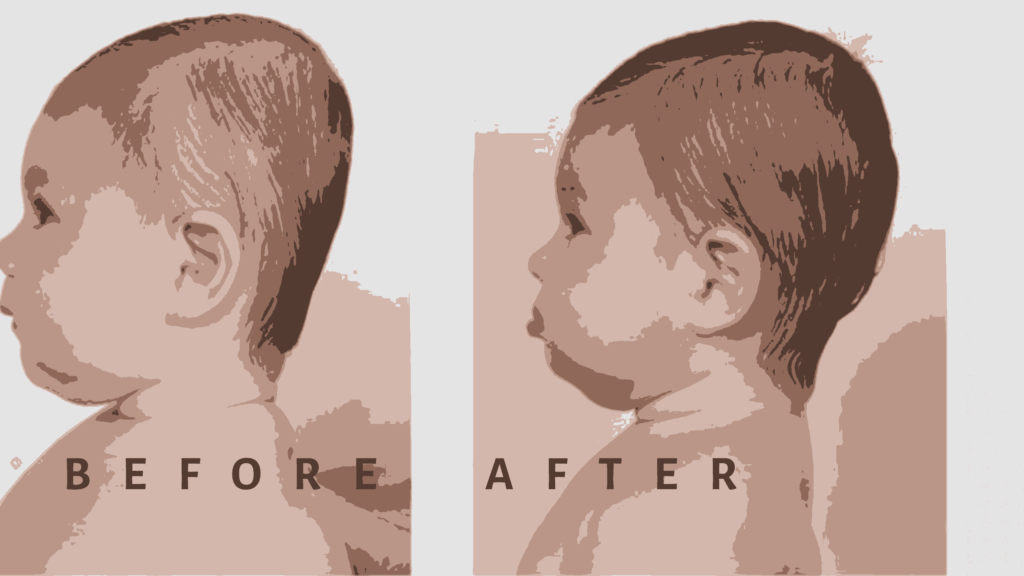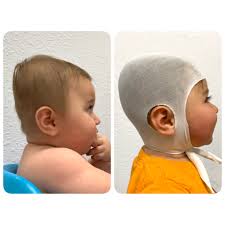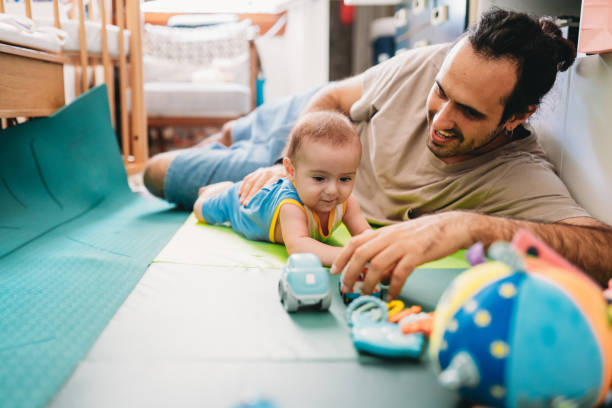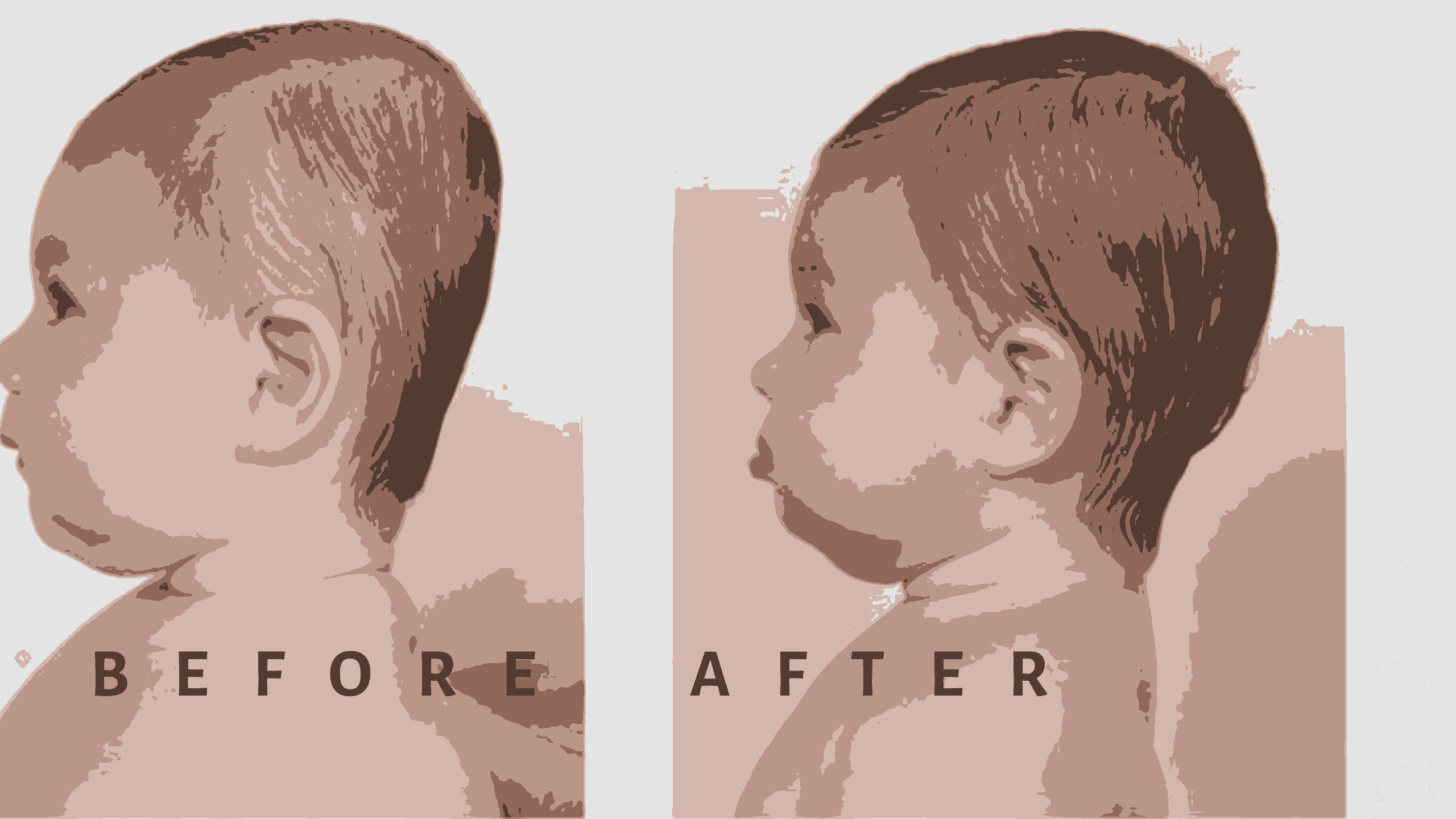7 Solutions to the Flat Head Syndrome in Babies
I bet that you might have come across a baby with a flat head and wondered how it developed. As a parent, you might be in these shoes, dealing with a baby with a head that appears flat on the back or sides. Before we dive right into the topic, brace yourself to learn about the following:
- Causes of flat head (plagiocephaly) in babies
- Types of flat head (plagiocephaly) in babies
- How to tell if a baby has plagiocephaly.
- Seven tips to reverse and prevent flat head in babies
- FAQs on flat heads in babies
Causes of Flat Head (Plagiocephaly) in Babies

You might be wondering why your baby has a flat head or what we called plagiocephaly earlier in the article. I will tell you everything to know about the causes of flat head in babies. These are the four major causes of flat head in babies:
1. Torticollis

Torticollis is a condition where the neck muscles force the head to rotate to one side, a condition called torticollis. Torticollis mainly occurs when the baby sustains an injury on the head during birth.
Another reason why your baby might develop torticollis is when they sleep on one side for an extended period. In this case, the delicate baby’s head develops a flat spot.
2. Prematurity
All babies have a delicate head, but for premature babies, you might find their skulls so weak. In most cases, premature babies’ delicate skulls can be deformed by almost everything. Since premature babies lie with their heads tilted at 45 degrees, they can develop flat sides. Such babies develop some special plagiocephaly, whereby their heads appear long and narrow.
3. Sleep Position
When babies sleep on their backs, they risk developing a flat head. The back area of the head is weak and easily becomes deformed, and babies develop flat heads when they sleep on their backs.
Types of Flat Head (Plagiocephaly) in Babies
Are there different types of flat heads in babies? You might ask. Yes, there are three types of plagiocephaly that babies develop:
i. Brachycephaly
Brachycephaly is a type of plagiocephaly that occurs due to the baby sleeping straight up. Since the back of the skull is in contact with the surface, it flattens.
ii. Scaphocephaly
Scaphocephaly occurs due to the joints between a baby’s skull closing up prematurely, preventing further growth. According to Dr. Cunningham, the top part of a baby’s skull comprises five bones. The five bones are separated by a soft tissue that expands to accommodate the growing brain.
In the case of scaphocephaly, some of the bones grow across the soft tissue, restricting the other bones from growing on the sides. As the baby grows, the head remains narrow on the sides.
iii. Positional Plagiocephaly

Positional plagiocephaly is the most common plagiocephaly, which occurs due to the positioning of a baby’s head. Babies are most likely to develop a flat area depending on the side they lie against.
Given that the baby’s skull is extremely soft, they could develop the plagiocephaly on the left, right, or back of their head. You can read more about positional plagiocephaly here.
How to Tell if a Baby has Plagiocephaly

It is so easy to tell if a baby has plagiocephaly. A healthy baby’s head should be symmetrical on the left and right sides. The skull should also be round.
If your baby does not have any of those features, they could be having a certain plagiocephaly. You can examine if your baby has plagiocephaly by looking at asymmetrical and flat spots on their head.
Your pediatrician can also help you examine if the baby has a flat head and suggest corrective measures.
7 Tips to Treat and Reverse Flat Head in Babies
As a parent or caretaker, give the baby the highest level of attention possible to manage a flat head. You can use these seven tips to treat and reverse flat head syndrome in babies. They include:
A. Holding Your Baby Frequently
Parenting is a full-time job that leaves you exhausted. Seeing your bundle of joy sleep gives you the chance to unwind and clean up after them.
However, you can spare a few minutes and hold your baby in your arms as they sleep. Letting the baby sleep in your arms is healthy since it prevents the baby from developing a flat head.
B. “Wearing” the Baby
You can actually “wear” your baby to prevent them from developing a flat head.
To “wear” a baby means carrying them with baby carriers and wraps to minimize sleeping time. Carrying the baby around reduces the risk of developing a flat head.
C. Tummy Time

“Tummy time” is a word many parents are encouraged to apply.
Tummy time refers to letting your baby spend time on their tummy occasionally.
When the baby spends time on its tummy, its stomach, neck, and shoulder muscles strengthen. Besides, when babies spend time on their stomachs, they rarely get positional plagiocephaly, the most common plagiocephaly in babies.
D. Watching the Baby’s Head Position
As a parent or caregiver, you should watch the baby’s head position when they sleep since it might influence flat-headedness.
Each baby has a preferred sleeping position. Some turn their head to the side while others are on their back, facing up. Depending on the direction that they like to sleep in, you can frequently adjust their heads.
E. Avoiding Overuse of Inclined Baby Seats in Cars

Babies’ safety comes first when traveling in cars. You only need to strap them to the baby seats on the back car seat, and boom! The journey becomes smooth, fun, and safe for you all.
You might not know that leaving the baby in the car seat for long might lead to a flat head. The inclined position of such car seats makes it hard for the baby to adjust their heads and necks, hence developing positional plagiocephaly.
It is not infant seats in cars alone that you should be wary of. Baby swings, rocking seats/chairs, and infant seats might weaken the baby’s neck muscles, leading to plagiocephaly in the long run.
F. Regular Chiropractic Care
If you are in a position to give your baby A+ care, take them to a chiropractor. After all, you take yourself to a masseuse, don’t you?
Chiropractors massage your baby’s tender muscles and diagnose if the baby has a flat. If the baby is positively diagnosed with a flat head, the chiropractor might work hard to try and reverse it.
Alternating Baby’s Position in the Crib
Every parent or caregiver has a way to place the baby in the crib, depending on whether the baby is left or right-handed.
Since most people are right-handed, they are likelier to cradle their baby in their left hand and lay them with the heads to their left. In this case, the baby is more likely to turn to the right to look for room.
The constant and frequent turning of the baby to the right makes them develop torticollis to the right.
The opposite happens to left-handed people.
You can protect your baby from developing torticollis by alternating their sleeping position occasionally.

FAQs on Plagiocephaly in Babies
The following are the frequently asked questions on flat head (plagiocephaly) in babies:
· Can a flat head in babies correct itself?
Yes. As the baby grows, their skull hardens and takes a distinct shape. If you had taken the corrective and preventive measures above early, the head returns to the right position with time.
Does a flat head affect brain development in babies?
According to preliminary research findings, infants who develop deformational plagiocephaly might have developmental delays compared to the ones without.
How should a baby with a flat head sleep?
A baby with a flat head (plagiocephaly) should sleep in a position that allows the head to turn frequently for a balanced skull shape.
Can a flat head in babies affect the face?
Failure to manage a flat face in a baby might eventually cause the face to grow unevenly, affecting the face.
How long does it take for flat heads in babies to resolve?
It takes about 12 weeks to correct plagiocephaly in babies between 3 and 6 months through conventional treatment or therapy.
Bottom Line
If your baby has a flat head (plagiocephaly), stop panicking; it is a common condition among babies. Follow the seven tips above to reverse it as soon as possible. Correcting plagiocephaly (flat head) early is the best ting to give your baby. How do you make your baby’s hair grow fast? Here is the article to learn about tips on how to make your baby’s hair grow fast and healthy.



